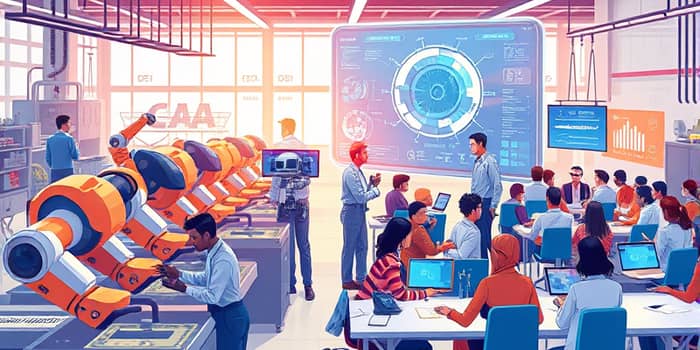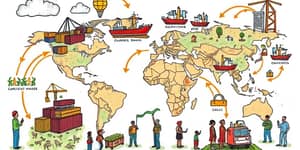
As artificial intelligence and automation technologies advance at breakneck speed, the world of work is undergoing a profound transformation. Far from a distant possibility, these changes are unfolding in real time, affecting employees, employers, and economies worldwide.
This article examines the current trends, explores sectors in transition, and offers guidance on how individuals, organizations, and policymakers can navigate this dynamic landscape.
Automation and AI are already driving significant workforce reductions due to AI across industries. Recent surveys reveal that 40–41% of employers plan to shrink headcount, while 78,000 tech jobs vanished in 2025 alone—an average of 491 layoffs per day.
Entry-level positions are particularly vulnerable. Nearly 50 million routine roles in the U.S. face disruption, mirroring a 25% drop in new graduate hires by major tech firms in 2024.
Yet loss isn’t the whole story. According to the World Economic Forum, 97 million new roles may emerge even as 85 million are displaced—a potential net gain of 12 million jobs by 2030.
Certain fields are more exposed to automation, while others remain relatively resilient. Market research analysts and sales representatives face the highest task-automation rates, at 53% and 67% respectively. Manufacturing could shed 20 million global jobs by 2030.
Managerial roles face lower but notable risks (9–21%), while jobs demanding complex judgment or interpersonal skills remain less automatable.
Automation isn’t only about replacing humans; it’s about collaboration. Up to 60% of existing jobs will see tasks modified, with employees overseeing and working alongside AI systems.
Warehouse staff at major retailers have transitioned to robot operators and troubleshooters, embodying a transformational shift in roles and tasks that blends human insight with machine precision.
New-collar careers are on the rise, spanning AI ethics, machine-learning operations, and prompt engineering.
With 20 million U.S. workers needing retraining over the next three years, effective reskilling is paramount. Organizations must invest in continuous learning to bridge skill gaps.
Individuals can take proactive steps to stay relevant, adopting a lifelong learning mindset is essential and seeking out emerging digital credentials.
Policy frameworks must keep pace, supporting a holistic education reform for future readiness and strengthening social safety nets for displaced workers.
The impact of automation varies by region. Advanced economies could see up to 60% of jobs affected, compared to 26% in low-income countries, risking widening inequality.
Offshoring trends add complexity: U.S. firms are increasingly hiring AI-supported teams in lower-cost markets, intensifying competition for entry-level roles.
Without concerted policy action—ranging from universal training programs to wage insurance—the benefits of AI risk bypassing vulnerable communities.
Despite the upheaval, AI-driven automation presents a dual narrative of challenge and opportunity. To seize the upside:
Companies like Microsoft, IBM, Meta, and Amazon have already restructured, eliminating thousands of roles while creating new specialist functions. Their journeys underscore the need for agility and foresight.
As we look ahead, individuals can prepare by cultivating adaptable skill sets, embracing emerging roles, and partnering with employers on continuous learning. Policymakers must champion collaborative policy approaches to workforce transformation, ensuring no one is left behind.
Ultimately, the story of AI and automation is not predetermined. By combining human ingenuity, strategic investment in skills, and inclusive policy frameworks, we can shape a future where technology enhances productivity and enriches lives.
References













